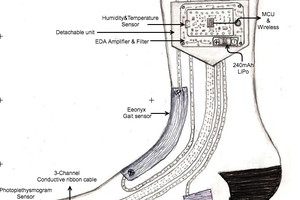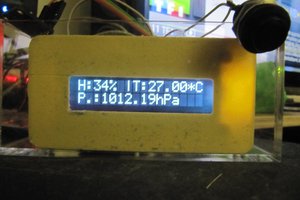TSensor is a secure Lorawan sensor node intended to secure your IP and your data. As STM32L072 MCU embedded in Murata's Type ABZ module is not really secure, the NXP's SE050 Secure Element (SE) chip has been chosen to secure TSensor. SE050 chip and OS are certified under common criteria at level EAL6+ which demonstrates how this product is actually secure against attackers.
In concrete term, SE acts as a secure coprocessor for the Murata's module. It supports a wide range of cryptographic features like symmetric or asymmetric encryption, cryptographic grade hashing, secure storage of data and counters, data attestation and so on.
In addition, this SE acts as a gateway for a secure I2C bus. All I2C transactions between secured sensors and the host MCU pass through the SE which can be used to attest (i.e. authenticate) all the responses from I2C sensors. Such a feature allows to enforce measurements authenticity and integrity right from their source. Even if the host MCU software is compromised, a remote attacker cannot tamper with sensor measurements as they are authenticated in the SE. A detailed description of this feature is provided on the NXP's website.
TSensor development follows a two-step methodology. First firmware is developed thanks to ST/Murata's Type ABZ and NXP's SE050 development boards (B-L072Z-LRWAN1 and OM-SE050ARD) . Then a hardware prototype is designed based on these components. The intended usage of the TSensor board and its firmware is to help designers in their works by providing some kind of open source reference hardware and software design. Thus it is not a final product but a development board with the following features:
- Really smal PCB (27,4mm x 62,7mm)
- Murata's Type ABZ module (CMWX1ZZABZ-091)
- NXP's SE050 Secure Element (SE050C2)
- SMA connector
- MIKROBUS Connector
- JST connector (battery)
- USB connector
- JTAG port
- UART port
- 1 LED, 1 reset button and 1 bootloader button.
Further posts will detail both TSensor hardware and software design.

 Naveen Sridharan
Naveen Sridharan
 Danie Conradie
Danie Conradie
 Manoj kumar
Manoj kumar
 Audrey Robinel
Audrey Robinel